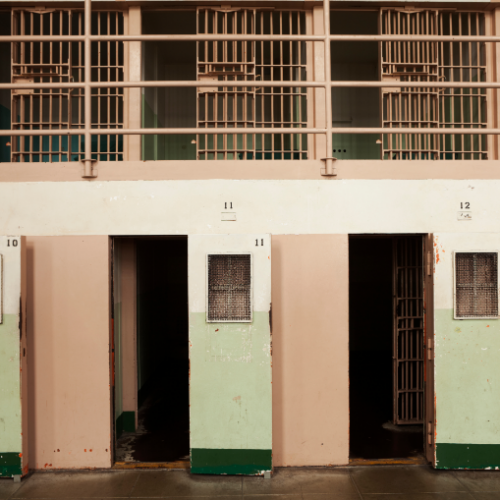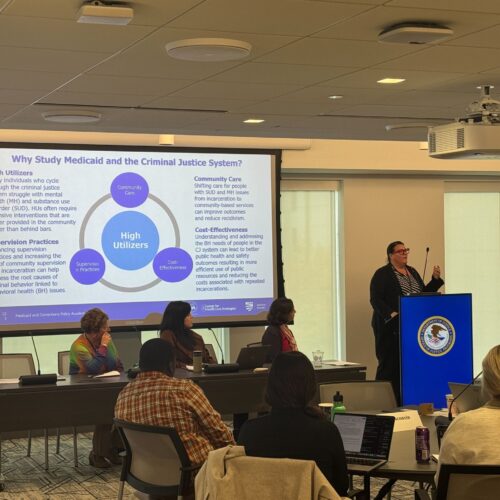The 2009 Recovery Act included the Health Information Technology for Economic and Clinical Health (HITECH) Act. The HITECH Act incentivizes hospitals and other health care providers to use electronic health records for Medicaid and Medicare patients. In the Medicaid program, an eligible health care provider (i.e., Medical Doctor, Doctor of Osteopathic Medicine, Nurse Practitioner, Certified Nurse, Midwife, Dentist, or Physician Assistant), whose patient volume consists of at least 30 percent Medicaid patients AND who uses a certified electronic health record is eligible for Electronic Health Record (EHR) incentive payments. EHR payments can amount up to $63,750 per provider over six years ($21,250 the first year, $8,500 each subsequent year for five years). The incentive payment is made to the direct health care provider, although the provider may assign the incentive payment to his/her employer, such as a correctional institution or correctional health care provider, pursuant to any existing contractual arrangements.
Previously, health care providers who practiced in prisons and jails were not eligible to receive EHR incentive payments because the terms of eligibility required visits with Medicaid patients be paid visits. However, in August 2012, a new regulation was published, Meaningful Use Stage 2, and now the terms of eligibility only require patients be enrolled in Medicaid. The change makes it possible for providers at correctional facilities to participate in the incentive program, because prisoners can be enrolled in Medicaid, even though Medicaid cannot pay for medical services in correctional institutions (per Section 1905 of the Social Security Act). EHR incentive payments are not payments for medical services.
This change means that health care providers seeing inmates in prisons and jails who are enrolled in Medicaid can now count those patients among the 30 percent Medicaid patient volume required for EHR incentive payments. If the correctional facility is in a state that currently provides Medicaid services to childless adults, or the state has chosen to expand Medicaid coverage under the Affordable Care Act in 2014 and the it “suspends” Medicaid eligibility rather than terminates it when the person is incarcerated, a significant number of prison and jail health care providers could be eligible to receive the EHR incentive payment who previously were not. The Medicaid enrollment status of female inmates with children should also be determined as health care providers in some women’s prisons may already be eligible for EHR incentive payments.
The Office of the National Coordinator for Health Information Technology has compiled a list of EHR systems that meet the terms of eligibility for EHR incentive program. To view this list, click here. Please note that if a correctional health care provider’s HER system is not on this list, it does not necessarily mean the EHR vendor is unaware of the incentive program. Please contact your current EHR vendor for clarification.
For more information about the EHR incentive program and eligibility, please contact your state Medicaid agency or visit www.cms.gov/ehrincentiveprograms.
A positive school experience, where a child feels secure, is essential for their well-being. However, for many children…
Read MoreWhen returning to their communities from criminal justice settings, people with behavioral health needs face barriers in accessing…
Read More Supporting Children of Incarcerated Parents: Reimagining School and Community Collaboration
Supporting Children of Incarcerated Parents: Reimagining School and Community Collaboration
A positive school experience, where a child feels secure, is essential for their well-being. However, for many children with incarcerated parents—one in 14 in the U.S.—school can feel far from safe due to stigma, trauma, and a lack of understanding.
Read More Bridging Communities and Correctional Systems: Q&A with CSG Justice Center Advisory Board Member Commissioner Nicholas Deml
Read More
Bridging Communities and Correctional Systems: Q&A with CSG Justice Center Advisory Board Member Commissioner Nicholas Deml
Read More
 Assigned to the Cloud Crew: The National Incarceration Association’s Hybrid Case Management for People with Behavioral Health Needs
Assigned to the Cloud Crew: The National Incarceration Association’s Hybrid Case Management for People with Behavioral Health Needs
When returning to their communities from criminal justice settings, people with behavioral health needs face barriers in accessing basic needs—including food, housing, employment, transportation, education, clothing, and substance use and mental health services—which increases their risk of experiencing a crisis.
Read More Meet the Medicaid and Corrections Policy Academy Mentor States
Meet the Medicaid and Corrections Policy Academy Mentor States
New Hampshire Department of Corrections Commissioner Helen Hanks presents at the Medicaid and Corrections Policy Academy in-person meeting.
Read More Taking the HEAT Out of Campus Crises: A Proactive Approach to College Safety
Taking the HEAT Out of Campus Crises: A Proactive Approach to College Safety
The sharp rise in school shootings over the past 25 years has led school officials across the U.S. to take a closer look at ways to keep students safe. For Chaffey College in Rancho Cucamonga, California, a tragic incident at a nearby university hit close to home and spurred campus leaders to revisit their own school’s threat assessments and crisis responses.
Read More










